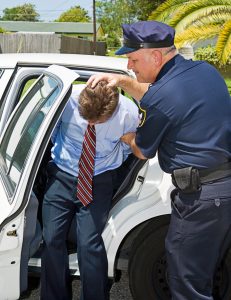
In Ohio, and throughout the United States, we have a Constitutional right to be free from unreasonable searches and seizures. In Ohio OVI cases, that means an officer can only arrest a suspect if the officer has probable cause to believe the suspect operated a vehicle under the influence of alcohol and/or drugs. In the recent case of State v. Bracken, the Court of Appeals concluded the arrest was not justified.
The Officer Reportedly Observed Signs Of Intoxication
In the early morning hours, a police officer stopped Cody Bracken for driving 61 mph in a 45 mph zone. The officer noticed a moderate odor of alcohol coming from Cody’s vehicle. The officer also noticed Cody’s eyes were bloodshot and glassy, and his face was flushed. The officer asked Cody about drinking alcohol, and Cody said he drank two beers.
Based on the officer’s observations, he administered field sobriety tests. On the Horizontal Gaze Nystagmus (HGN) test, the officer reportedly observed six clues out of six possible clues. On the Walk And Turn (WAT) test, the officer allegedly observed five out of eight possible clues. On the One Leg Stand (OLS) test, the officer purportedly observed three of four possible clues. On the partial alphabet test, Cody skipped a letter. The officer arrested Cody and charged him with OVI ‘impaired’ in the Franklin County Municipal Court.
The Officer’s Observations Were Contradicted By Cruiser Video
Cody hired a lawyer and contested the OVI charge. The lawyer filed a motion to suppress evidence, arguing Cody’s arrest was an illegal seizure. The trial judge heard the testimony of the officer, reviewed the dash cam video from the officer’s cruiser, and heard arguments from the prosecution and defense. The trial court commented on the field sobriety tests being administered in bad weather, and the court observed the cruiser video contradicted some of the officer’s claims. Ultimately, the trial court concluded the arrest was unlawful and suppressed all evidence obtained as a result of the unlawful arrest.
The prosecution appealed to the Tenth District Court of Appeals; the Ohio appellate court with jurisdiction in Franklin County. The ‘question presented’ by the prosecution was this: “When an individual is stopped in the early morning hours for speeding, emits a moderate odor of alcohol, displays bloodshot, glassy eyes, admits to consuming alcohol and fails three standardized field sobriety tests does the officer have probable cause to arrest the individual for operating a vehicle while under the influence of alcohol?”
Probable Cause Is Determined From All The Circumstances
The Appellate Court noted probable cause is based on the ‘totality of the circumstances’. Although the officer testified he observed symptoms of intoxication, other circumstances were inconsistent with intoxication. Cody had no trace of slurred speech, walked heel-to-toe with no noticeable impairment, and performed well on the One Leg Stand test. In addition, there was no erratic driving, and the officer acknowledged Cody’s speeding is not an indication of operating a vehicle under the influence. After reviewing the totality of the circumstances, the Court of Appeals reached the same conclusion as the trial court: the officer did not have probable cause to believe Cody was operating a vehicle under the influence.
This case is a refreshing confirmation of two principles. First, when evaluating probable cause in an OVI case, all the circumstances should be considered; those consistent with intoxication and those inconsistent with intoxication. Second, a judge does not have to believe the testimony of a witness under oath, even when that witness is a police officer. If the Court blindly accepted the officer’s subjective interpretation of the incident, the Court would have found the officer had probable cause to justify the arrest. Thankfully, there was dash cam video to show the incident objectively.
 Columbus OVI/DUI Attorney Blog
Columbus OVI/DUI Attorney Blog

